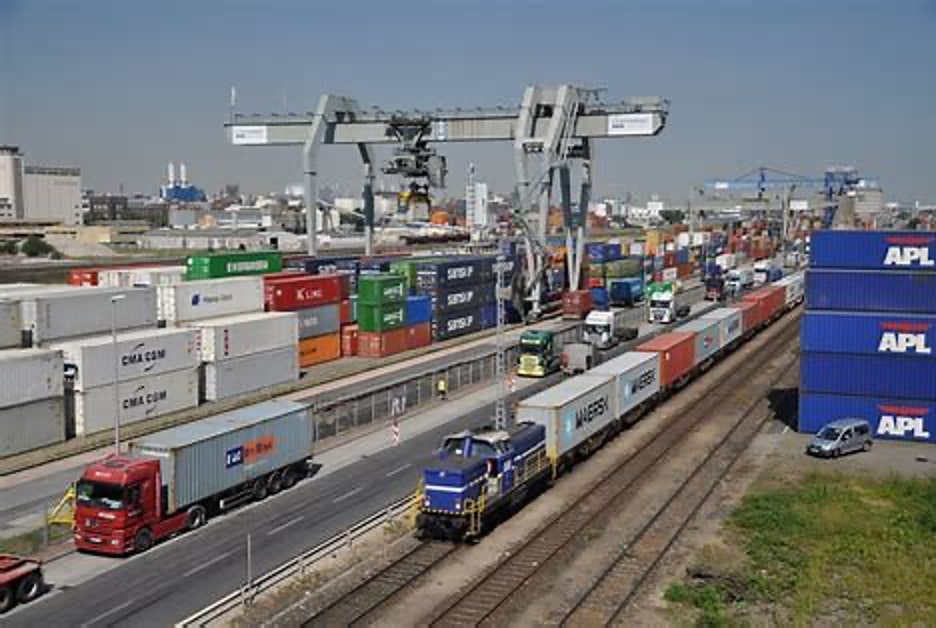When thinking about positioning you probably first think of navigation. The device in your car that helps get from where you are to where you want to be. Or navigating while hiking in the backcountry. But those applications are not the where the big unit growth will come. The biggest demand will be in asset tracking, expected to reach over 1B units by 2025. These demand very low power. And world-wide communication. Low power positioning for logistics.

Logistics tracking
Think about that TV you ordered on-line. Manufactured maybe in Taiwan. Or a cooling system for a server, built by a contract manufacturer in Shenzen. Each must be loaded in a shipping container along with many other packages and transported maybe by road, maybe by rail to a port. Where the container will be loaded on a large ship with perhaps 20,000 other containers. That voyage will take anywhere between 15 and 30 days, to a port in LA perhaps. Containers are offloaded in a yard where they are transferred again to trains or trucks and transported to distribution centers. There, packages are regrouped for local distribution and shipped by vans or truck to homes and businesses.
That’s a lot of lead time for impatient consumers. And businesses that must plan manufacturing and delivery to much shorter schedules. Manufacturers and retailers build inventory so they can respond quickly to their buyers. But then they need to monitor that supply chain very carefully. Especially to know where orders are in that complex web of transportation.
The old-school way of doing this was through NFC tags. Tags on palettes and tags on shipping containers. But that’s not a scalable way to track large shipments. NFC tags can only be read up close with hand scanners. No-one is going to climb around a freight train scanning thousands of containers. What you need is an active but very low power positioning solution. Something that will work around the world, far from cities. That will identify containers stacked on a rail car or a ship, and palettes when outside containers.
GNSS and NB-IoT deliver
Active positioning requires GPS. Actually something more than GPS because China, Europe and Russia are each developing their own global positioning systems, supported by their own satellites. These are (mostly) unified through a standard called GNSS. So while GPS alone is good enough for global coverage today, logistics businesses are already planning and building for GNSS. To ensure we’ll still be able to rely on unified positioning around the world.
However, GPS/GNSS is power hungry because we expect instant updates when we’re using it for navigation. Since packages and containers may be in transit for weeks, that power demand must be slimmed down dramatically. CEVA has created a solution called “snapshot positioning” which does just this. Checking position periodically then going back to sleep. This compromises a little on accuracy (down to several meters) but is more than good enough to position a ship, train or truck. This modification requires some changes to the algorithms that normally depend on more frequent updates.
You also need to transmit that position update. For which narrow-band IoT (NB-IoT) is an ideal solution. Designed to transmit small amounts of data at very low energy consumption. Satellite-based NB-IoT communication solutions are already appearing, making communication feasible, even in the middle of an ocean. Put these together and now you have an active solution to track containers, palettes, even packages with no need for hand scanning. You want a solution you can stick on millions, billions of packages and palettes. Maybe even for one-time usage. A cost-effective embedded chip, self-contained apart from a battery and an antenna.
Dragonfly
CEVA has such a solution: Dragonfly, currently supporting GPS snapshot positioning and NB-IoT communication. Implemented as software IP optimized to run on the CEVA-BX1 DSP, at ultra-low power. They can also add CEVA’s Wi-Fi and BLE solutions, for in-warehouse tracking and CEVA’s MotionEngine Scout for dead-reckoning. And they plan to add other GNSS constellations soon. Check them out.
Also Read:
Spot-On Dead Reckoning for Indoor Autonomous Robots
IP and Software Speeds up TWS Earbud SoC Development
Expanding Role of Sensors Drives Sensor Fusion
Share this post via:





Comments
There are no comments yet.
You must register or log in to view/post comments.